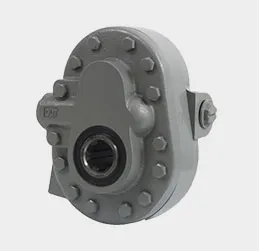ci foot valve
Understanding CI Foot Valves Essential Components in Fluid Management
Foot valves play a crucial role in various applications within the water and fluid management systems, particularly in industries such as municipal water supply, agriculture, and construction. Among the different types of foot valves, the Cast Iron (CI) foot valve stands out due to its durability, strength, and resistance to corrosion. In this article, we will delve into the significance, functioning, and benefits of CI foot valves.
What is a CI Foot Valve?
A foot valve is a type of check valve installed at the bottom of a suction pipe, typically submerged in the fluid source, such as a well or a storage tank. The primary function of the foot valve is to maintain the prime in pumps by preventing backflow when the pump is not in operation. CI foot valves are constructed from cast iron, making them suited for high-pressure applications and environments that require robust materials capable of withstanding wear and tear.
How Do CI Foot Valves Work?
The operation of a CI foot valve is relatively straightforward. It consists of a valve body that houses a mechanism (usually a clapper or flap) controlled by pressure differentials. When the pump operates, the pressure created by the pump opens the valve, allowing fluid to flow upward through the suction pipe. Once the pump ceases operation, the pressure drops, and the valve closes automatically to prevent the fluid from flowing back down, which could lead to losing the prime of the pump.
This simple yet effective mechanism is vital for systems where continuous fluid flow is necessary, and it safeguards against potential damage that could arise from backflow. Additionally, many CI foot valves are designed with strainer elements to filter out debris from the fluid, further protecting the pump and extending its life.
Advantages of CI Foot Valves
ci foot valve

1. Durability One of the most significant advantages of CI foot valves is their durability. Cast iron is known for its strength and ability to withstand high pressures, making these valves ideal for demanding applications where other materials might fail.
2. Corrosion Resistance While cast iron can rust, many CI foot valves come with protective coatings to enhance their resistance to corrosion, especially in water applications. This added layer of protection can dramatically increase the valve's lifespan.
3. Maintenance CI foot valves generally require minimal maintenance. Their simple design means fewer moving parts, making them less prone to mechanical failures compared to more complex valve systems.
4. Versatility These valves can be used in various applications, from agricultural irrigation systems to municipal water supply and industrial processes, showcasing their versatile nature.
5. Cost-Effectiveness Although the initial purchase price of a CI foot valve may be higher than plastic or non-durable alternatives, their longevity and robustness often make them a more cost-effective choice in the long run.
Conclusion
In summary, CI foot valves serve an essential purpose in fluid management systems, ensuring that pumps maintain their prime by preventing backflow. Their durability, resistance to corrosion, and minimal maintenance needs make them a favored choice in several industries. As water and fluid systems continue to play a vital role in global infrastructure, understanding the components like CI foot valves is critical for optimizing efficiency and reliability in these systems. Investing in quality CI foot valves is an investment in the longevity and performance of your fluid management setups, ensuring smooth operations for years to come.
-
Top Extras Casting Solutions Die Casting and Sand Casting Experts High-Quality Casting and Die Casting ServicesNewsJun.10,2025
-
Top SS Casting Manufacturer Aluminum Die Casting Manufacturer China Precision Die Casting Company SupplierNewsJun.10,2025
-
High-Quality Brass Casting Sand for Precision Sand Casting Brass at HomeNewsJun.10,2025
-
Affordable Aluminum Sand Casting Solutions Custom PartsNewsJun.09,2025
-
High-Quality China Sand Casting Services Cost-Effective & ReliableNewsJun.09,2025
-
Premium Hot Stamping Parts Durable Plastic Decor SolutionsNewsJun.09,2025















